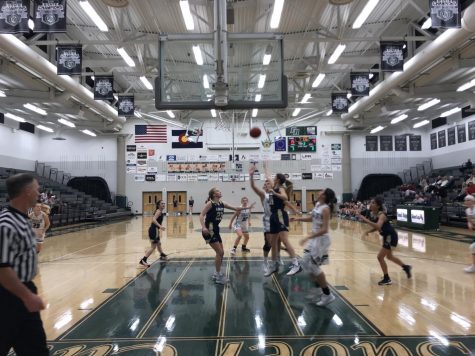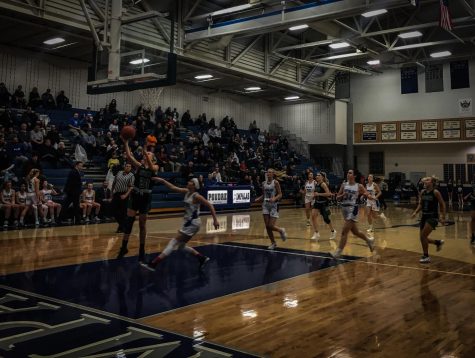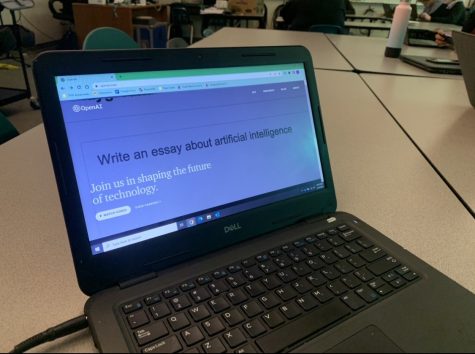Profiling: it’s time for a recall in school threat preparation
A report by The National Center for Education Statistics found that 95% of schools in America conduct lockdown drills, meant to prepare and protect students and staff from active shooters. A study by The Washington Post found that during the 2017-2018 school year, 4.1 million students throughout the country experienced at least one lockdown drill. Here’s the catch—in most of those cases, they are required by state or local law. After the rise in school shootings since Columbine, lockdown drills have become more prevalent in schools and a constant debate has been in process regarding the intention and effectiveness of these drills in preparing students for the worst case scenario.
This debate has outlined the idea of not eliminating these drills, but in practicing them with care. Many experts argue that lockdown drills have resulted in psychological trauma for many young children across the country. Unannounced active-shooter drills have posed real threats to how safe children feel on campus—students sobbing hysterically, teens texting their parents “I love you” or “Goodbye,” and even vomiting. Others work to assure students that is “it is okay to feel anxious during these drills” as they help acclimate students to procedures which should take place, if, say, they were actually put in that situation. Those conducting the drills have every intention on creating a sensorial experience, in which senses are heightened, which may better prepare students and staff for the worst. Yet, acting out surreal scenarios, in which fake blood or blank fires are involved, may trigger a psychological reaction which scares children instead of preparing them for how to react in these situations.
Since the rise in school shootings, many discussions have taken place regarding the importance or relevance of children and staff defending themselves in the case of an intruder, including whether or not students and staff should be trained in hand-to-hand combat. Programs like ALICE – which stands for Alert, Lockdown, Inform, Counter, Evacuate – teaches students and staff how to defend themselves against school shooters and threats. Withholding a belief that lockdown drills pose students as sitting ducks waiting in harm’s way – you need to act to save lives. Additionally, they encourage students to fight back and believe the most effective course of action is countering, which involves ways to disrupt and/or distract the shooter. The concept of having and preparing students to attack armed shooters is rejected by many, but could equally likely could be a matter of the psychological phenomenon known as “normalcy bias,” in which individuals underestimate the probability, or even effects, of disasters. Let’s not forget this in the case of a school shooting, which although rare, is not unheard of. Students and parents alike like to believe that something so horrific wouldn’t happen to them—in fact, that is likely all they would believe if they were put in that situation, which could be putting themselves in harms way unnecessarily. Because we all are so convinced that something so unimaginable won’t happen to us, we are more likely to inadequately prepare for these disasters.
Moreover, since Columbine in 1999, there has been a massive rise in the demand for school security systems, which now is a $3 billion per year industry. It is without a doubt that schools work to prepare students for the worst case scenario, but it may be time to take a different approach to this modern and seemingly expensive concern for safety in schools – not only should we continue to practice lockdown drills, but students and staff should consider the benefits they may obtain in being trained in defense as well as criminal psychology.
Understanding criminal behavior may play an essential role in our society’s (and school’s) ability to prevent school shootings. That starts with being able to characterize and understand criminal behavior and what drives people to engage in such heinous activity.
In an effort to explain the motive of school shooters, Peter Langman, psychologist and known expert on school shooters, answered questions for Lehigh University where he provided some fascinating insight on the individuals who engage in school shootings as well as things that students and staff should be educated on to better help prevent such tragedies. What he first explains is that school shooters don’t just wake up one day and become a mass murderer, and they don’t “snap” either. It is a slow build and it is important to understand that there are three types of people who commit school shootings. Because they come from different backgrounds and may struggle in different ways mentally, it may explain why much of the time they do what they do. More so, having this knowledge could be useful in defending ourselves. The three types are the traumatized shooter, the psychopathic shooter, and the psychotic shooter:
- The traumatized shooter comes from a dysfunctional family, poverty, abuse in the home. Some cases of victims of sexual assault, parents are poor, kids bounce around from one caretaker to another, they have no stability and eventually the rage and depression build
- The psychopathic shooter does not necessarily come from a broken home, but is usually characterized as a narcissist, having little care for others, feeling no remorse or empathy, and has no respect for laws or regulations and therefore insists on doing what they please. Much of the time, they are sadistic, meaning they derive pleasure in having the power over life and death.
- The psychotic shooter similarly does not typically come from a broken home, but is usually the person you’d characterize as a loner. They typically fall within the schizophrenia spectrum and are very isolated. They have hallucinations, they hear voices talking to them, and have paranoid delusions, delusions of glory.
The similarity found among most school shooters says that their defeat builds for a while before an event pushes them over the edge. This could simply be getting into trouble at school or rejection by a girl. Many times these characters cannot avoid slipping their plans to their peers, accidentally or intentionally. In addition, they idealize someone of similar character or intention, such as Charles Manson, Hitler, or even Dylan Klebold and Eric Harris of Columbine High School. As for warning signs, the first ones are known as attack related behavior and leakage – stockpiling weapons, researching other shooters, recruiting friends to join the attack, or warning friends to stay away from the school that day. These shooters oftentimes can not keep their intentions to themselves, which heightens the importance we must place on teaching children the warning signs. An obsession with firearms, obsession with other school shootings, and mental instability can all make for a deadly cocktail.
Being able to identify and characterize such individuals can be better seen as “profiling,” often an attempt to discover the true identity of criminals. An article by George S. Everly looked to answer what type of person perpetrates school shootings. The simple answer is that there is not “one” profile, but if we examine the subset of school shooters who had or do attend the school, which are most lethal, there may be a profile that resembles such a person. The following seven factors may be “points for consideration in a quest to reduce school violence:”
- The vast majority of school shooters are male and about 90% of them were active or recent students at the school.
- One predominant theme in school shootings stem from feelings of anger and a need for revenge.
- 75% of shooters felt bullied or harassed by others students, felt they were unfairly treated by teachers, and usually have specific targets but kill randomly in order to inflict as much pain as possible.
- School shooters tend to be socially awkward and avoidant, isolating themselves with few, if any, friends.
- They seemed to retreat into a “realm of fantasy,” especially when under stress.
- They may exhibit an obsessive quality which may lead to detailed planning but ironically, they lack understanding of the consequences of their behavior and therefore may have a history of adverse encounters with law enforcement; this obsessive quality also leads them to focus on those feelings of interpersonal rejection, unfair treatment, and elaborate plans for revenge.
- Shooters may have history of cruelty to animals (low probability, but significant when present); they express a fascination with violence, morbid media, or death and if they do associate with others, they are often times others who share such gory preoccupations.
- They often have a sense of hopelessness that predicts their own death by the end of the incident.
- The media contagion effect (copycat killings) may serve as an especially powerful motivator for those who already have feelings of anger, loss or frustration.
- They tend to have dysfunctional family ordeals or a lack of parental supervision or mentor
- 68% of shooters obtained a weapon from their own home or the home of a relative—yes, availability to firearms does matter.
Shooters tend to express their feelings or intentions through art or social media, which makes monitoring such media important in early identification of these individuals All factors considered, it is almost impossible to “profile” one person using this model. It is the accumulation of common themes which calls for consideration by law enforcement and school staff. It also is not going to tell us who will be the next to kill—what it will do is provide awareness for those who may be at high risk for committing school violence, and that alone is one more reason why schools should advocate for teaching students criminal psychology as a form of defense in which they may be better equipped to protect themselves in the instance of a school shooter.
Your donation will support the student journalists of Fossil Ridge High School. Your contribution will allow us to purchase equipment and cover our annual website hosting costs.

Jaidyn Nelson, a senior, is currently taking her first year of Journalism and excited to begin her year as an on-staff member. Throughout the last months of her high school journey, Nelson will be working on covering the school’s activities, including school orchestrated events, dances, and other productions...












